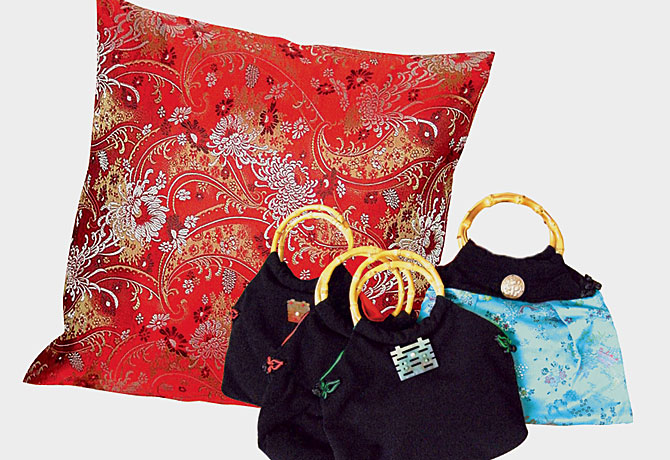
In the heyday of the Silk Road, caravans bore China's lustrous fabrics to the outside world. Now that the world has come to China, the nation's traditional silks are among many icons, like the blue Mao suit or the Flying Pigeon bicycle, in danger of disappearing.
Taiwan-based designer Jennifer Chang Chernick is making a valiant attempt to stave off their decline, however. She travels around China, working with traditional weavers for her home-decor and accessories label Persimmon Lane, persimmonlane.com. Notably, Chernick is making use of the most storied of Chinese silks—a treasure known as shu brocade—in some of the bags and pillows she creates.
Persimmon Lane was born six years ago during a fateful visit to Chengdu, the capital of Sichuan province. Chernick had recently left a five-year marketing career with Chanel when, by chance, she drove past the dilapidated Chengdu Shu Brocade Factory, about to close its doors for good. Told the brocade would no longer be produced as a result of declining interest in the traditional silk jackets and wedding blankets it was used for, she bought out the factory's remaining stock—more than 10,000 meters of it—and started her own label. "I had never seen anything like it," recalls Chernick, who grew up in the U.S. admiring her grandmother's hand-embroidered Chinese silks. "The weave was much tighter than any of the modern commercial silks you see in China's coastal cities." With a history of over 2,000 years, shu is the oldest of China's four styles of brocade and embroidery, and has an impressive lineage. Native to Chengdu, it gained renown in the Tang dynasty (618 to 907) and was the official imperial silk into the Qing dynasty (1644 to 1911). Shu took on a more modern form in the 1920s, when designs began to fuse Chinese and Western motifs, setting chrysanthemums and pagodas against Art Deco stripes or paisley. This is the style Persimmon Lane uses today.
Chernick's creations are available through boutiques in Hong Kong and San Francisco. The stock of precious fabric, meanwhile, is carefully stored in a climate-controlled apartment in Chengdu, and may be the only large quantity of the city's shu brocade left. In effect, Chernick is selling a piece of history. "This is a textile that dates back to Marco Polo days," she says. "It'll be tragic if it can't keep up with the tides of change."